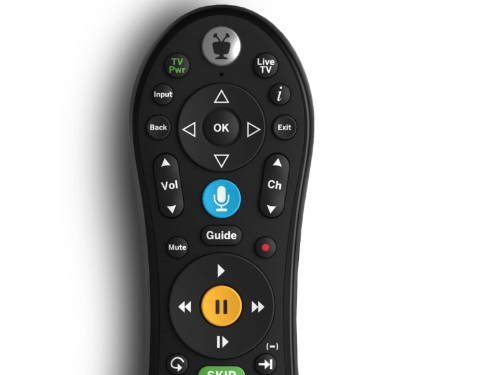Voice Search Awareness, Accessibility Inch Ahead: TiVo Study

Accessibility and awareness of voice search for TV navigation is ticking up, but adoption is still lagging, as a sizable number of consumers with that capability still don’t use it, TiVo found in its Q4 2017 Online Video and Pay-TV Trends Report.
The study, based on a survey of 3,330 adults in the U.S. and Canada, found that 24.4% said they have voice search available to them, but just over half (13.9%) said they actually use it.
But some other results show that voice search continues to catch on, albeit at a slow pace.
RELATED: Machine Learning Holds Key to Scaling Up Comcast’s Voice Remote (subscription required)
Awareness is evidently up, as fewer consumers than last year (5.4%) said they were unsure if voice search was an option for them, while accessibility rose 4 percentage points quarter-versus-quarter, and 13.5 points over two years. About 20.2% without voice search said they’d like the ability to do so.
For Q4, 45.3% said they use a cable or satellite box or remote for voice search, ahead of other platforms – Amazon Fire TV (31.7%), Apple TV (18.1%), game consoles (17.7%), Roku (10.6%) and TiVo’s new Bolt Vox (1.5%). However, TiVo’s new device entrant saw the highest average of voice searches per week, at 8.6, ahead of Apple TV’s 7.6.
As for consumers who aren’t interested in voice search, 53.8% said it’s a “gimmick” with no real benefit, down 5% quarter-on-quarter, while 21.3% said they aren’t comfortable talking into a device to find something to watch on TV.
Multichannel Newsletter
The smarter way to stay on top of the multichannel video marketplace. Sign up below.
Though remotes with microphones are among the top ways people use voice search, a growing number of pay TV providers are starting to integrate that capability with smart speakers.
TiVo found that 21.5% of those surveyed owned a smart speaker, up 6.9% quarter-over-quarter. Amazon’s Alexa-powered Echo and Dot products combined for 57% of the market, ahead of Google Home’s 35.5%. Not factoring in yet was the Apple HomePod, which launched in February. Roku is also getting into the smart speaker game through a program for CE partners.
RELATED: Roku’s Platform Reaches Beyond the TV
Turning to SVOD, TiVo’s study found that 68.2% of respondents used such a service, up 4.6% quarter over quarter, and 12.8 percentage points over two years. Some 69.5% of them are “cord-cheaters” that have a pay TV service and complement it with one or more SVOD services.
Almost 39% said they spend $9 to $14 on SVOD services, while 13.7% spend $25 or more each month, up 5.5 percentage points year-on-year. Nearly half (48.1%) said they watch one to three hours of SVOD content per day.
The study also focused on a broader group of subscription video services that includes SVODs and virtual MVPDs. Netflix leads the way, with 54.8% of the surveyed group subscribing, versus Amazon Prime Video (25.6%), Hulu SVOD (16.7%), YouTube TV (8.5%), HBO Now (6.1%), Showtime (5.6%), Starz (5.2%), DirecTV Now (3.8%), CBS All Access (3.4%), Sling TV (2.4%), PlayStation Vue (2.3%), Hulu Live (2%) and fuboTV (0.8%).
In the study’s latest look at the cord-cutting trend, TiVo found that 85.2% take a pay TV service, but 18.9% cut service in the last 12 months. That latter number is at its lowest since the Q3 2016 survey results, but the number of consumers who have not had a cable or satellite TV service in for greater than 12 months rose 4.6% year-on-year.
That caused TiVo to wonder if consumers are cutting the cord and choosing not to resubscribe to cable because they’re not missing it. Notably, 7.3% said they plan to cut their pay TV service, a slight increase from the previous quarter.
RELATED: Cord-Cutters Not Returning to Pay TV: TiVo
Price remains the top reason (86.7%) for consumers to cancel pay TV service, the highest it’s been since TiVo introduced the question in Q3 2016. Use of a streaming service (39.7%) and use of an antenna (23%) rounded out the main three reasons.
For consumers without pay TV, 44.8% said they use an antenna, but that figure has basically flattened out over the past six quarter, TiVo found.
For Q4 2017, 63.5% of respondents have used one or more streaming devices in the last three months, an increase of 3.4 percentage points quarter over quarter, and 6.8 points year-on-year. Among those with streaming devices, just 14.2% use them to access their pay TV service, the study found.
